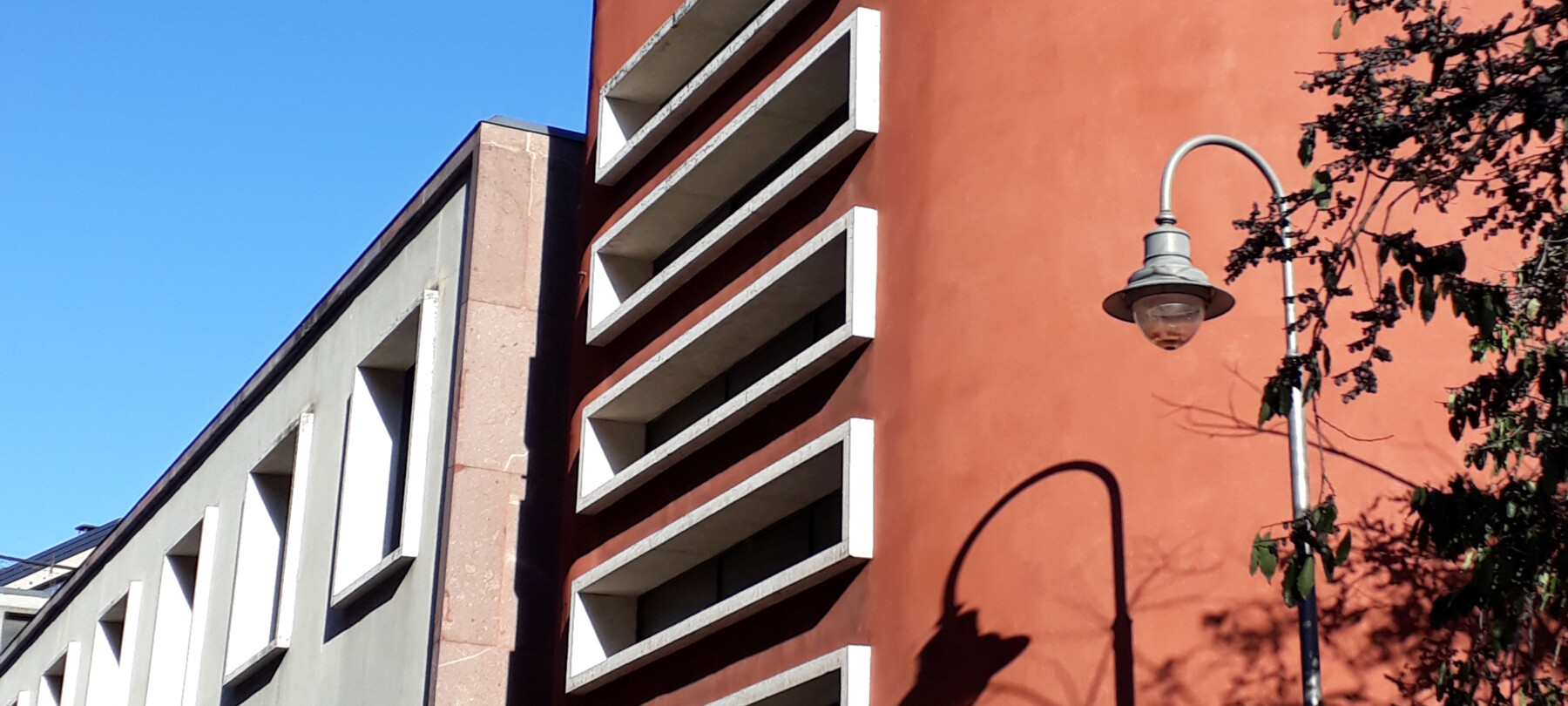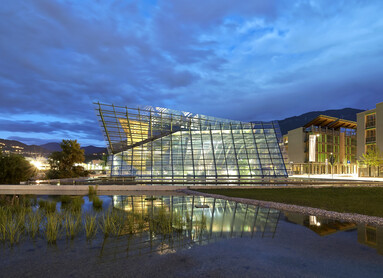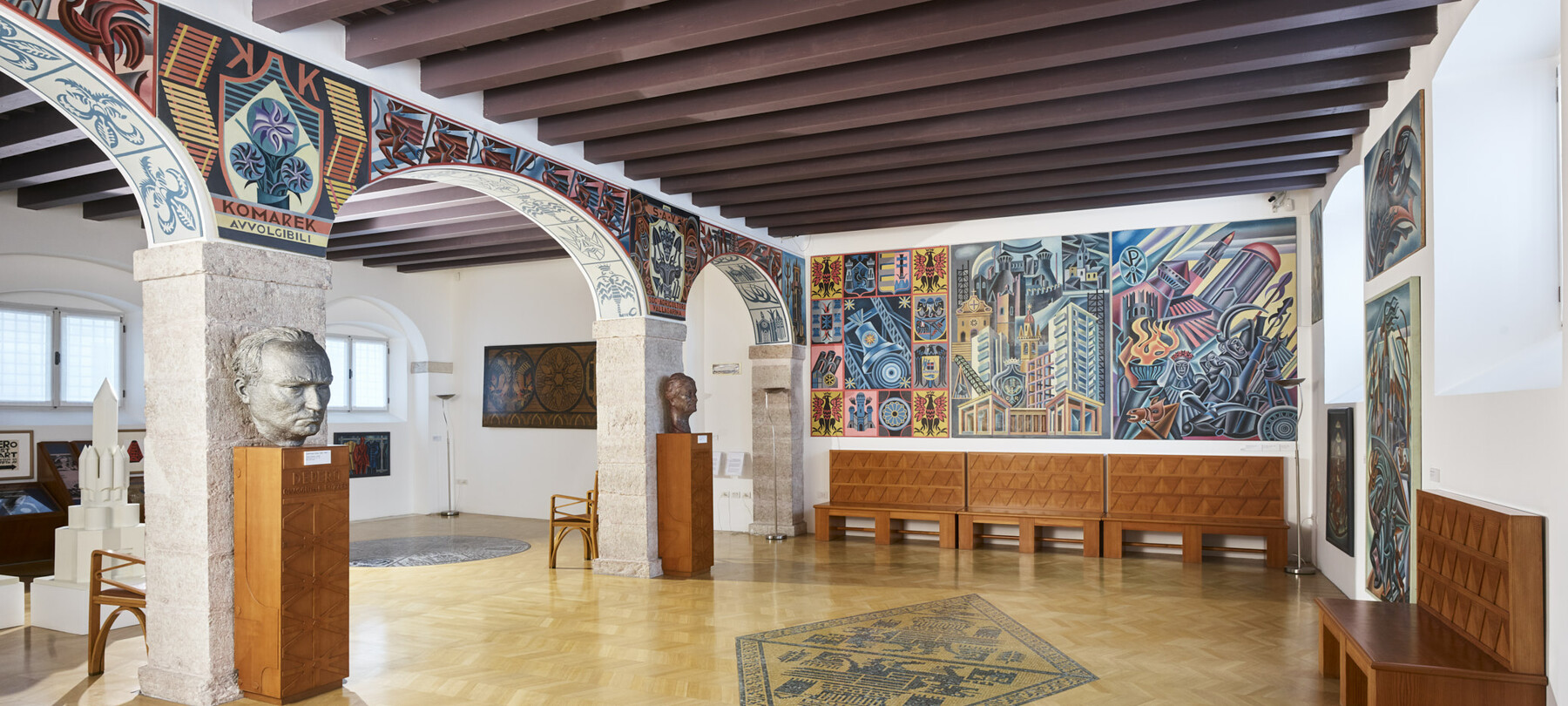A visit to Trento and Rovereto to discover the masters of modern architecture
A walk through architecture, urban projects and innovative design
They call them “architectural tours”. They are holidays for discerning visitors, roamers looking for urban landscapes, unknown spots, views of modernity, buildings that overstep the boundaries of time. If you catch a glimpse of your ideal holiday in the description, there is good news for you. You already have your destination for your next weekend break: Trento and Rovereto, two cities to explore through their architectural masterpieces.
Just follow the advice of this little guide, which has already selected the places you should not miss, leading you by hand to discover the modern side of Trentino.

Renzo Piano, MUSE and the Albere district
The “Le Albere” District in Trento
We start from a district that was part of a regeneration project comprising a large area lying between the city centre of Trento and the river Adige, which until quite recently housed a Michelin factory: Le Albere.
Opened in 2013, the district was designed by the celebrity architect Renzo Piano, one of the famous names of modern architecture, who has designed famous buildings, such as the Centre Pompidou in Paris.
As soon as you arrive, you are mesmerised by the silhouette of the Muse, the Trento Science Museum, which is reminiscent of the Alpine Mountains. The spectacular use of glass panels gives momentum and lightness to the structure. Renzo Piano adopted this solution also for the exterior of the BUC, the university library, the other large public building in the district.
Besides the design of the structures, the constant presence of water is striking: from the mirrors where the MUSE is reflected and which create iridescent reflections even when you are inside the museum, to the small canals that cross the streets of the new district, and remind us of the abundance of water in this Alpine territory.

New prospects in Trento
An ecological neighborhood
Besides the design of the structures, the constant presence of water is striking: from the mirrors where the MUSE is reflected and which create iridescent reflections even when you are inside the museum, to the small canals that cross the streets of the new district, and remind us of the abundance of water in this Alpine territory.
But the Le Albere district, which takes its name from the white poplars (whose species is called “albera” in Italian) that grow in the area, is also important for technological and environment-friendly aspects underlying the project.
It was devised as a district of eco-houses (Klimahäuser) built mainly of wood, fitted with solar panels and heat pumps, featuring rainwater harvesting and a central heating plant that distributes heat to the houses through several substations.
An eco-friendly district, designed for people, where you can walk about without being bothered by cars due to the large underground car parks that free up the outdoor spaces and make them pleasantly usable, and thanks to its large green park, with a view of the Doss Trento (a small hill on the right bank of the river Adige) and the Sardagna waterfall, on the slopes of Monte Bondone.
Although the district is still relatively new, it comes alive during the warm season, when the park and large square host events and music that cater to everyone.
The works of Adalberto Libera in Trento
In Trento, you can photograph many works by Adalberto Libera, the architect born in Villa Lagarina, who is renowned for designing the Villa Malaparte in Capri, which was immortalised in the film “Contempt”, written and directed by Jean-Luc Godard.
Next to the Castello del Buonconsiglio (castle) you can see the modern style of the School of Raffaello Sanzio, the famous painter and architect: an insertion of rationalist architecture between the Gothic and Renaissance lines of the ancient city of the Prince-Bishops.
But Libera also used a different kind of architecture, more in line with the modernist trends of the 1950s, in the Palazzo della Regione (Trento Regional Council Building), in front of the Trento railway station, closing off the view of Piazza Dante. In this case, the inventive project, which uses only two pillars to support the entire façade of the building, is extremely interesting.

The "Raffaello Sanzio" schools in Trento
The Sala Depero (hall) in Trento
In the case of the Sala Depero, architecture and art become part of everyday life and decorate public life spaces: the hall is in fact a large meeting room built inside the Palazzo della Provincia Autonoma, in Trento in the 1950s, by the Futurist artist Fortunato Depero.
The hall is decorated with very colourful panel works and is furnished with distinctive Depero style chairs and furniture, a style that blends together curved lines, geometric shapes and bright colours, which was then re-proposed in post-modern times, and is therefore more in line with our aesthetic tastes.
Depero personally took care of all the details in this project, from the paintings to the decorations, to the furnishings, making this space a “total work of art”, which could offer the visitor a real compendium of the identity of Trentino: landscapes, traditional buildings, popular motifs of work and religious tradition, proposed by the artist in his original stylistic reinterpretation. The room can be visited upon reservation.






The Mart in Rovereto
Let’s continue our journey amongst the works of the architecture masters by moving to Rovereto. Besides being one of the most important museums in Europe for modern and contemporary art, the MART is the architectural work which, since the late 1980s, has enhanced the already beautiful city of Rovereto.
The eighteenth-century but also somewhat classically Italian style of the city is enhanced by the architecture of the Museum designed by Swiss architect Mario Botta and Rovereto-born engineer Giulio Andreolli. The building offers striking views: its flight of stairs, large entrance and, in particular, its circular square, featuring the entrances to the museum, library, Melotti auditorium and cafeteria.
The circular piazza is covered by an impressive glass dome, which Mario Botta designed with the same proportions as those of the Pantheon in Rome. The dome is not completely fitted with glass: a segment is uncovered and allows you to see the sky. The yellow stone of Vicenza that covers the MART complex is the same as the one that Palladio preferred to use in his buildings and enhances the classical, warm style of the museum.
A novelty in 2019: the MART’s cafeteria is now called “Alfio Ghezzi Bistrot”. From 9 am to 7 pm, the well-known Michelin-star chef offers quick breakfasts and lunches for people visiting the museum, but in the evening, it becomes a top-notch restaurant called Senso, offering superb dishes created by the renowned chef. Twenty-five seats for an exclusive gourmet experience.

The fabulous dome of the MART
The Casa d’Arte Futurista Fortunato Depero
Staying in Rovereto, after a nice walk amongst the squares of the old town, you can reach another building where applied art and design reigns. We are talking about the Casa D’Arte Futurista, the only museum founded by a Futurist artist in Italy: Fortunato Depero, created a collection of his own works, almost an opening up on his personal world relating to imagination.
A collection, therefore, not only of works of art, but also of objects designed by Depero, which are particularly interesting because they were designed for everyday use, such as furniture, tapestries, and some objects that have become part of the cultural landscape of ordinary Italian people, like the famous Campari Soda bottle. It is still exactly the same as when it was first created in the 1930s!
A dive into the world of Depero and into the artistic panorama sparked by the new stimuli of the early 20th century. A concept museum to be appreciated also for the richness of its colour effects, the humour of Depero’s works, in which the playfulness of a little boy, which accompanied him throughout his life, is clearly visible.



